A rehab workout to get you moving again
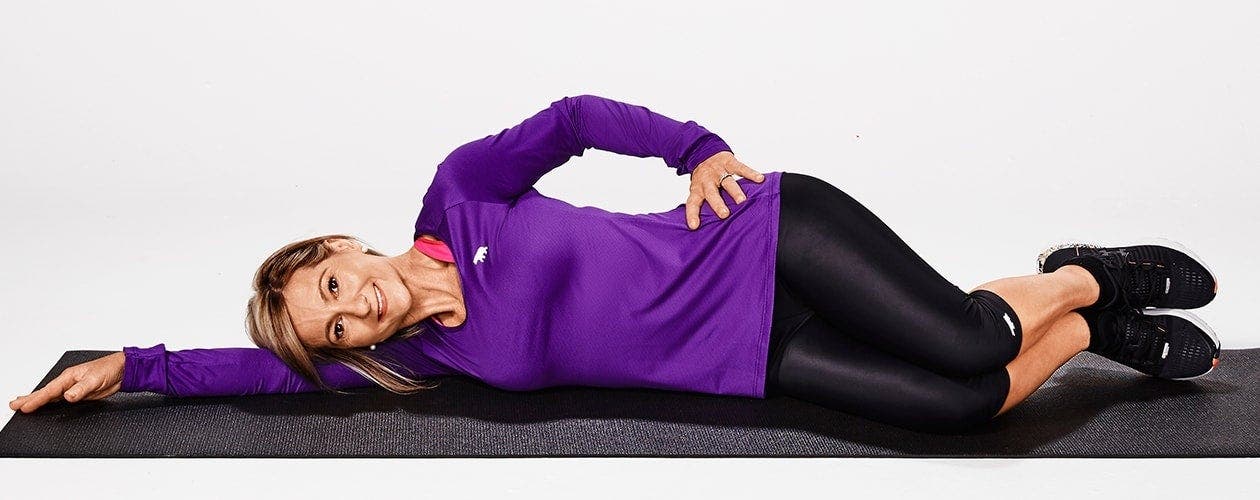

How to workout with an injury
Having small setbacks and minor injuries in your fitness plan is common, but they shouldn’t bring your progress to a standstill. If you’re suffering from niggling pains, addressing the cause of the injury is both better for your pain and your health and wellness goals. Prevention is always better than cure and these exercises will fit into almost any program to reduce the risk of common injuries and help with recovery.
Before you get started
Always consult your GP/Physio first after sustaining an injury or if you feel more pain during any of these exercises – stop and seek the advice of your GP/Physio.
1. Heel taps
Helps with lower back pain.
How do they work? These activate the transverse abdominis muscles – the deep abdominal muscles that act as a ‘corset’ for your lower back. These movements challenge the position of your spine and slowly help you develop the ability of this muscle group to stabilise your lower back position.
How-to: Lie on your back with your knees bent and feet flat on the floor (A). Breathe in and, as you breathe out, contract your deep abdominal muscles. Lift one leg at a time off the mat until both knees are bent at a 90-degree angle. Keeping your abdominals contracted and your lower back on the floor, slowly lower one leg to tap your heel on the ground (B), then return to the start position. Repeat on the other side. Start with 10 reps on each leg and build to 20.
Tip: If you feel any pain in your lower back, just lie down and work on your breathing and deep abdominal activation. This will activate the muscles you want to work while allowing the muscles in your lower back and hips to relax.
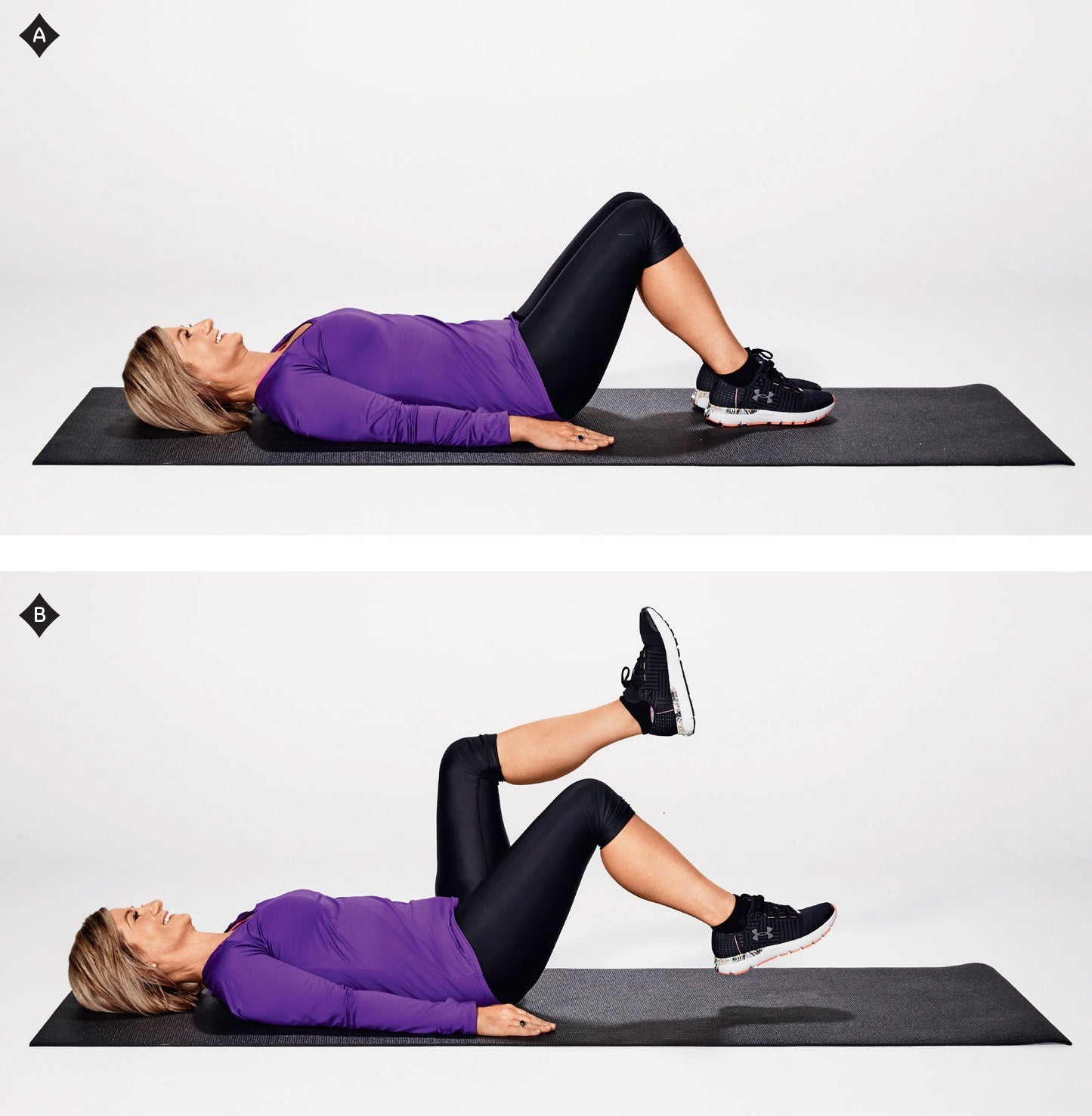
2. Controlled step-ups
Helps with lower back and knee issues.
How do they work? Performing this exercise with a focus on the front of the thigh and the glutes can help you stabilise your hips, spine and knees.
How-to: Place your foot on a step or block that is about 10cm-20cm high (A). Practise pressing through your heel, feeling the muscles above and around your knee contract. Once you are able to feel this you can perform the step-up. While doing the step-up, try to keep your glutes activated, your knee in line with your middle toe and your hips even (B). Pause at the top and slowly lower. Perform 10 reps on each leg.
Tip: Do these in front of a mirror so you can watch your hip and knee alignment. If you are having trouble with step-ups, practise balancing on one leg for 30 seconds.
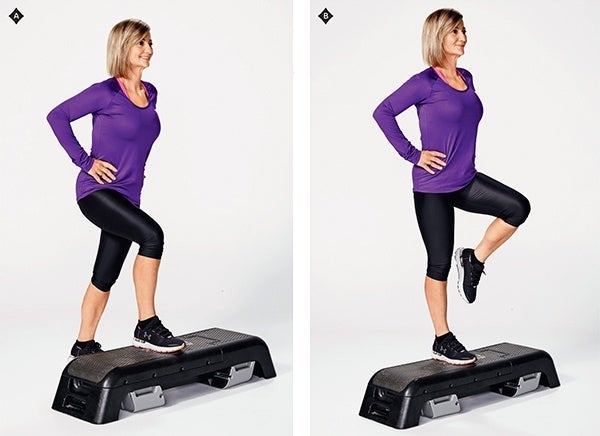
3. Alternate arm and leg lifts
Helps with neck, lower and upper back and knee pain.
How do they work? When performed correctly, this exercise encourages endurance and muscle sequencing in the neck, upper and lower back and shoulders. This exercise will also help improve your posture.
How-to: Lie on your stomach, arms above your head and legs straight (A). Draw in your bellybutton and squeeze your abdominal muscles, then slowly lift your opposite arm and leg until they form a long straight line (B). Focus on squeezing your glutes on the leg you are lifting, drawing your shoulder blade in towards your spine and pointing your thumb up on the arm you are lifting. This is great if you lack stability or have wrist or shoulder issues that prevent you from doing upper-body weight bearing. Do 10 reps on each leg.
Tip: For more of a challenge, try these on your hands and knees in a tabletop position, keeping your lower back and hips level. Pretend there is a glass of water on your lower back and try not to spill it.
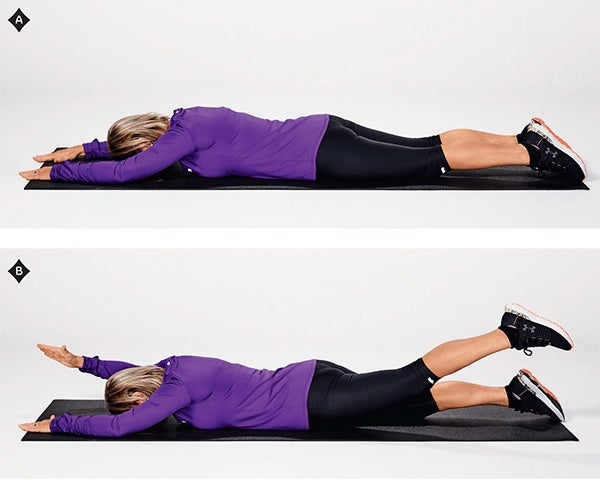
4. Single leg hip raises
Helps with lower back and knee issues.
How do they work? This exercise is a great way to strengthen your glutes and hamstrings as well as improve lower-back endurance, stability and control.
How-to: Lie flat on your back with your feet flat on the ground (A). Lift one leg and activate your deep abdominal and gluteal muscles. Pushing through the heel of the foot on the ground, keeping your toes lifted, slowly raise your hips until there is a straight line from your shoulder to your knee (B). Slowly lower until your hips are just off the ground and repeat 10-15 times on each side. Keep your hips even and glutes squeezed throughout the movement.
Tip: If this is too challenging, start with both feet on the ground and slowly progress to doing it on one leg.
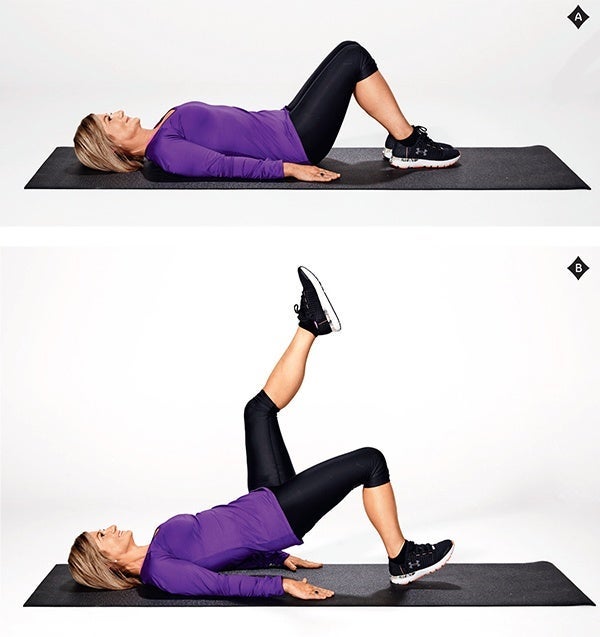
5. Clams
Helps with lower back, hip and knee injuries.
How do they work? Clams help build endurance and strengthen the gluteus medius, which is responsible for balancing your hips while you walk and controlling the rotation of your thigh bone and knee position as you stand on one leg, walk and run. A weakness in your glute medius results in a chain reaction of injuries such as Iliotibial Band syndrome, knee pain and lower back pain.
How-to: Lie on your side with your knees bent so your shoulders, hips and heels are all in one line (A). As you breathe in, slowly raise your top knee as high as you can without moving your lower back and keeping your feet together (B). Pause, then lower your knee as you breathe out until it is just above your other knee. Repeat 15-20 times on each leg.
Tip: To make it harder, elevate your feet by rolling a mat up and putting it under your heels.
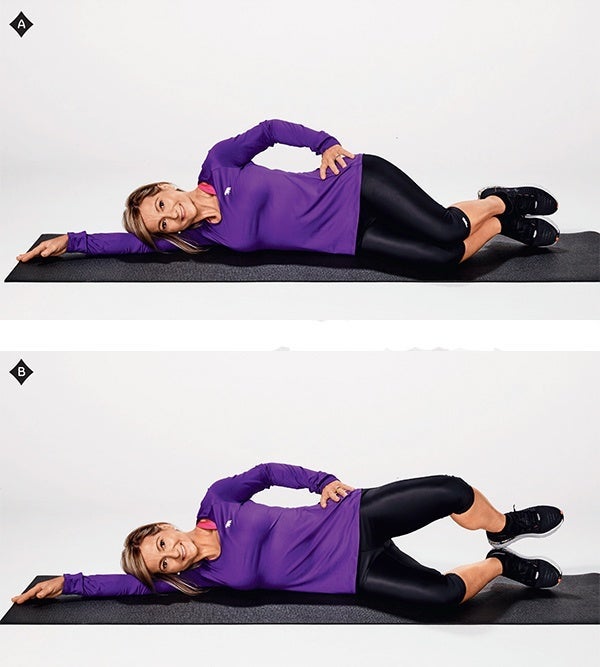
WW member Michelle Jenkins-Pickles, 46, has lost 33kg. She suff ers from lupus, which aff ects her joints, and says, “With a healthier lifestyle I’ve been able to avoid taking medication.”
